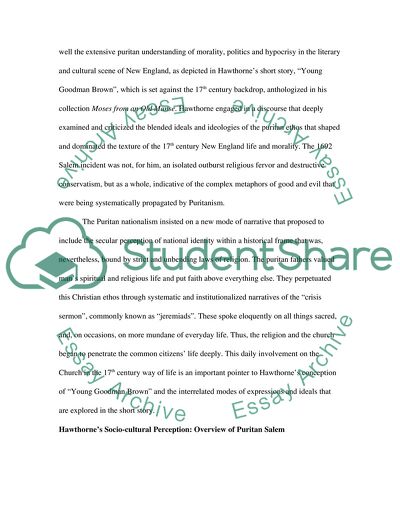Cite this document
(A Puritan and Social Contextualization of Hawthornes Young Goodman Research Paper, n.d.)
A Puritan and Social Contextualization of Hawthornes Young Goodman Research Paper. Retrieved from https://studentshare.org/literature/1804760-the-puritan-religion-culture-in-the-social-conditions-in-salem-in-the-late-1600s
A Puritan and Social Contextualization of Hawthornes Young Goodman Research Paper. Retrieved from https://studentshare.org/literature/1804760-the-puritan-religion-culture-in-the-social-conditions-in-salem-in-the-late-1600s
(A Puritan and Social Contextualization of Hawthornes Young Goodman Research Paper)
A Puritan and Social Contextualization of Hawthornes Young Goodman Research Paper. https://studentshare.org/literature/1804760-the-puritan-religion-culture-in-the-social-conditions-in-salem-in-the-late-1600s.
A Puritan and Social Contextualization of Hawthornes Young Goodman Research Paper. https://studentshare.org/literature/1804760-the-puritan-religion-culture-in-the-social-conditions-in-salem-in-the-late-1600s.
“A Puritan and Social Contextualization of Hawthornes Young Goodman Research Paper”, n.d. https://studentshare.org/literature/1804760-the-puritan-religion-culture-in-the-social-conditions-in-salem-in-the-late-1600s.


